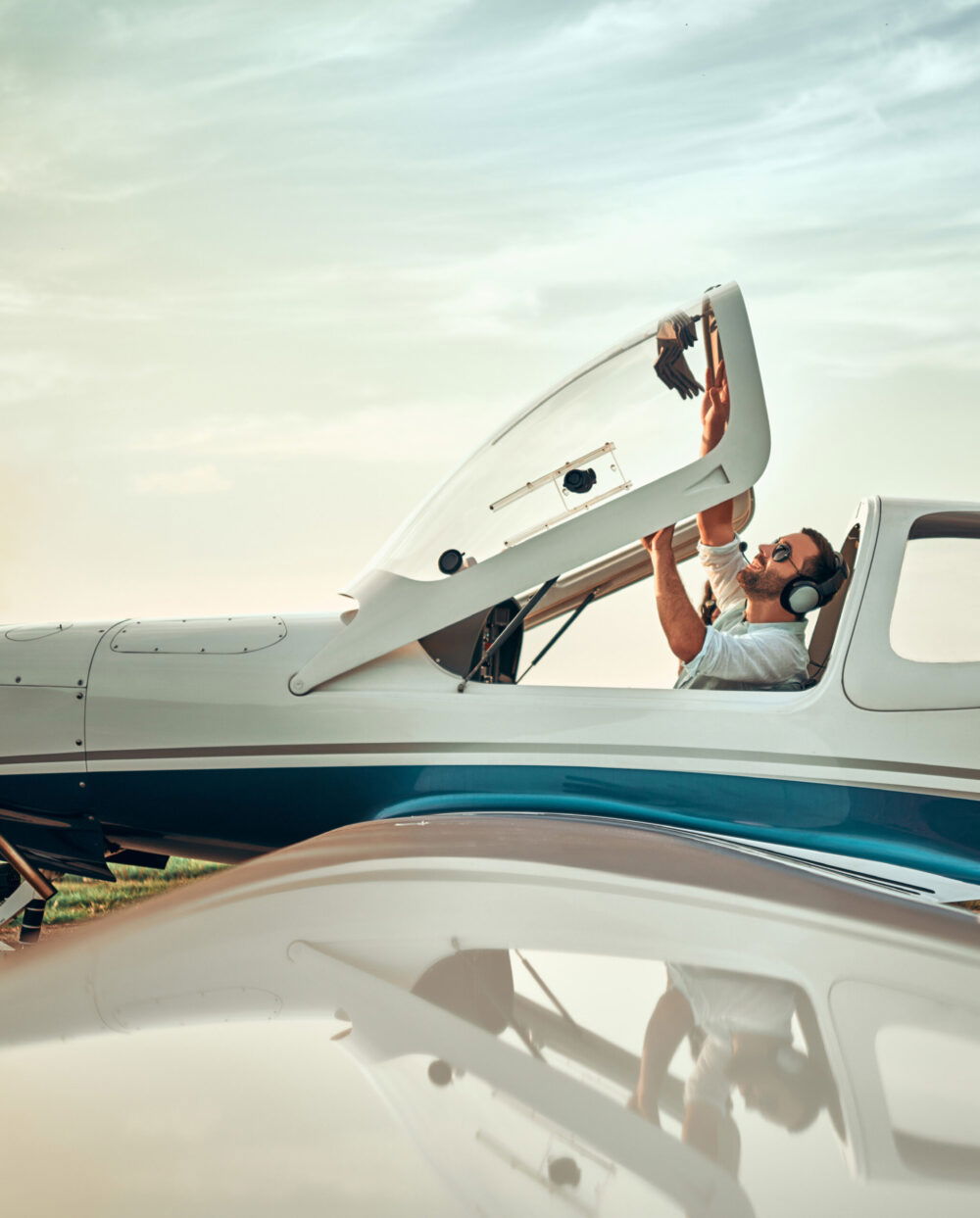Question: How important is it to clean the windscreen of an airplane before every flight? And what do I clean it with? I’ve heard horror stories about accidental damage.
Answer: Kudos to you for wanting to be proactive and doing your homework. A dirty or scratched windshield can be a potential safety hazard, and replacing a windscreen that was scratched by poor cleaning technique is not something you want to deal with. It can cost thousands of dollars in supplies and labor. If the aircraft is on leaseback to a flight school, it could also lead to a loss of revenue.
- READ MORE: How Do You Know When to Descend?
Windscreen Cleaning Tips
Plain water and a clean microfiber cloth are a good start. Rinse the windscreen first, then gently stroke it from top to bottom with a clean cloth. By clean, I mean fresh out of the pack. Don’t press hard and do not scrub in circles. Plexiglass, which is what the windscreen is made of, is relatively soft and you could put permanent swirl marks into it.
If you drop the cloth on the ground during the process, don’t use it again. It may have picked up a piece of grit that could scratch the windscreen.
Also, do not use a paper towel as it is too abrasive.
- READ MORE: Should I File an Initial Approach Fix?
Use a ladder to be sure you can safely reach the entire windscreen. Take care not to let any buttons, zippers, or other metal, such as a belt buckle, ring, or watchband, scratch the windscreen.
Do not use Windex on airplane windscreens—ever. The ammonia in Windex can weaken and compromise the plexiglass and give it a hazy appearance.
- READ MORE: How Do You Check NOTAMs?
Prist is a brand of cleaner made for aircraft windscreens. Follow the directions on the bottle. For stubborn dirt or smashed bugs, let the Prist soak in a bit before you begin to wipe up and down. Use gentle strokes.
Side note: Never use Prist on car windows because they are made from safety glass, which will become hazy when treated with the product. It becomes like a layer of soap and is a challenge to remove.




